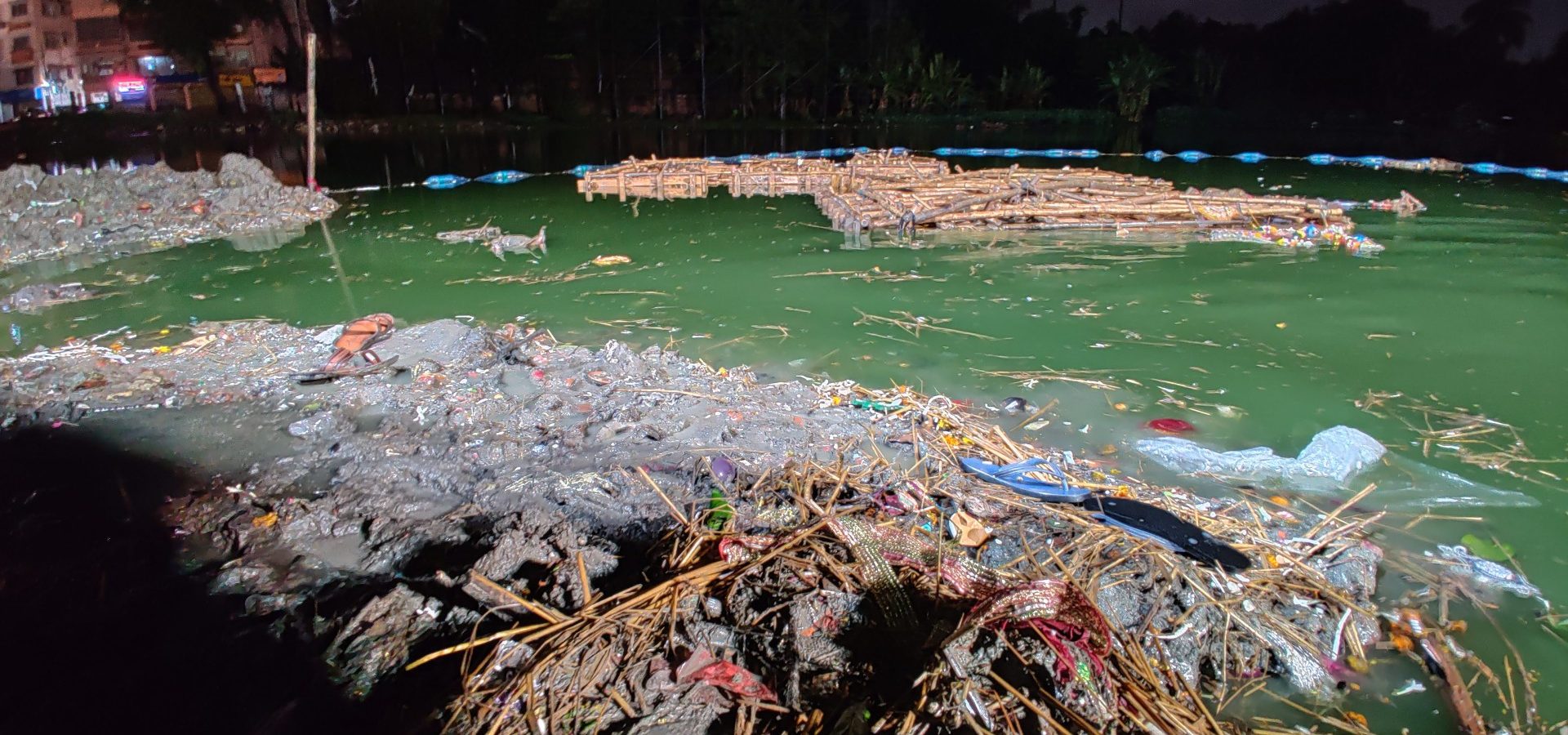It is that time of the year when the people of India unwind and come together to celebrate. That’s right, it’s the time of festivals! As entire cities prepare themselves to host festivals, people enjoy this break from daily work as they get immersed in the festive spirit. Festivals bring joy, gaiety and euphoria, but this certain joie de vivre has an ecological impact, that too a negative one.
Ganesh Chaturthi is the biggest festival of Maharashtra and is also celebrated in some parts of western India as well. On the other side of India is Durga Puja, the largest one celebrated in West Bengal and other eastern and north-eastern states. The culminating Vijaya Dashmi or Dussehra is celebrated diversely across the country at this time. Diwali , the festival of lights follows and West Bengal along with its neighbouring states conduct Kali Puja during this festival. Kali Puja, Ganesh Chathurthi and Durga Puja are three different festivals, but have one thing in common: idols. All three of them have one negative ecological impact in common as well: idol immersion. Thus, it is imperative to note how the celebration of our festivals can bring about massive ecological damage to aquatic habitats, and how this can be contained.
Immersions in Maharashtra
In Maharashtra, the biggest source of water pollution is undoubtedly Mumbai, and in the fun and frolic of festivity, aquatic residents around the city are sadly forgotten. People carry Ganesh idols for immersion in the Arabian Sea after the rituals are over. The idols are made from Plaster of Paris (PoP) and are painted with poisonous dyes that lead to toxicity in the aquatic ecosystem.
It is the morning after that brings back parts of broken idols ashore, and lakhs of milk packets, remains of coconut and other prayer material remain scattered on the beaches; a sight that consolidates the fact that these practices are extremely harmful to nature. These activities not only degrade the aesthetics of the beaches, they are also fatal to wildlife. Idol immersion has resulted in mass killings of turtles and fish that had washed ashore dead in 2018 on Mumbai’s Dadar and Juhu beaches.

The major reasons behind their death are the PoP used in manufacturing the idols, and the paints used to enhance the idol’s appearance. Water snakes died from the toxic chemicals released by the PoP, as well as the overload of bacteria resulting from the immersed flowers and sweets given as offerings. Paints contain lead, aluminium, chromium and copper, which after dissolving, turn into noxious compounds in water. These inevitably damage the gills of fishes.
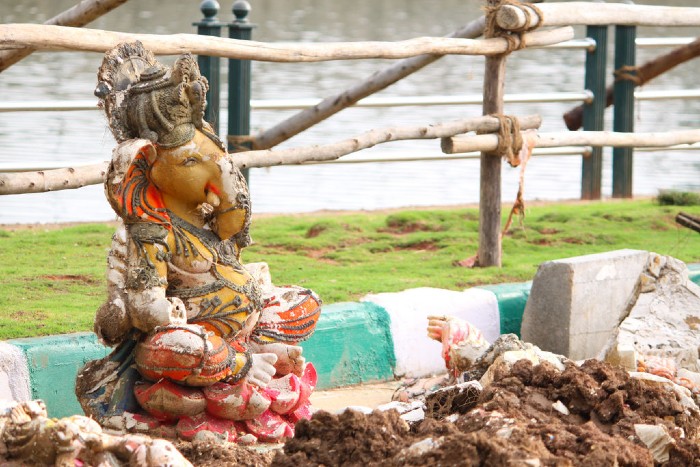
The harm to marine wildlife isn’t where this stops; the 11th day of the festival is when the highest number of idol immersions take place. Heaps of trash in the form of plastic and offerings are left behind on the beaches, making them an eyesore. The garbage eventually chokes the land, the water and the animals.
Immersions in West Bengal
While celebrations of the Dussehra festival after Navratri take place all over the country, Durga Puja is celebrated with gusto in eastern India. The central components of this festival are the thematic artistic installations and of course, the idols. Even though some idols are made from organic materials such as clay and bamboo, the lead in the paint that coats them is hazardous to the aquatic environment.
It is largely on the 10th day of the festivity (Dussehra or Dashami) that the majority of the idols are immersed in West Bengal’s Hooghly river, which is the eastern distributary of river Ganga. The capital city of Kolkata has the highest impact on this aquatic habitat, followed by other cities and towns situated along the banks of the river. Over 3,000 pujas are held in Kolkata itself, making it the city with one of the highest numbers of idols. And their immersion is not just restricted to the river, but takes place in other freshwater habitats too, such as lakes, artificial reservoirs and ponds.
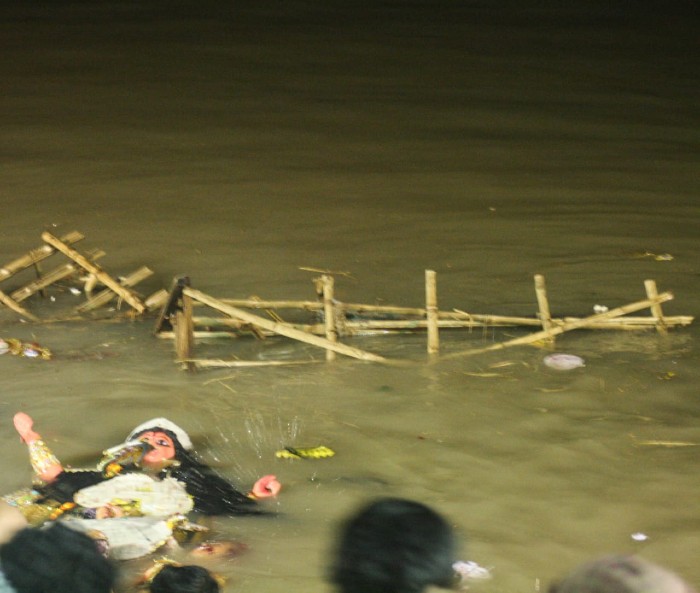
Immersion of these idols poisons the water of ponds, lakes, rivers and eventually the sea by increasing acidity and the content of heavy metals. Heavy metal pollution caused by idol immersion can clog the ecosystem by killing fishes, damaging plants, and stopping the natural flow of the water, causing its stagnation.
Even though the state Pollution Control Board (PCB) has thought of inculcating ‘eco-friendly’ immersions, the journey towards it is yet to pick up gear. The strategy involves pulling out the idols as soon as they are immersed in the water. But the implementation of this has faced hurdles due to a shortage of enforcement officers to supervise this entire process. Inevitably, garbage in the form of debris is left in the water, no matter how swiftly the idols are retrieved.
An Attempt at Sustainable Celebration
The question is, can sustainable celebration be attained? In order to celebrate sustainably, a lot of methods that constitute the festivity need to be rethought. To start with, the ornamentation, garments and garlands that the idols are adorned with the need to be removed beforehand to follow an eco-friendly immersion.
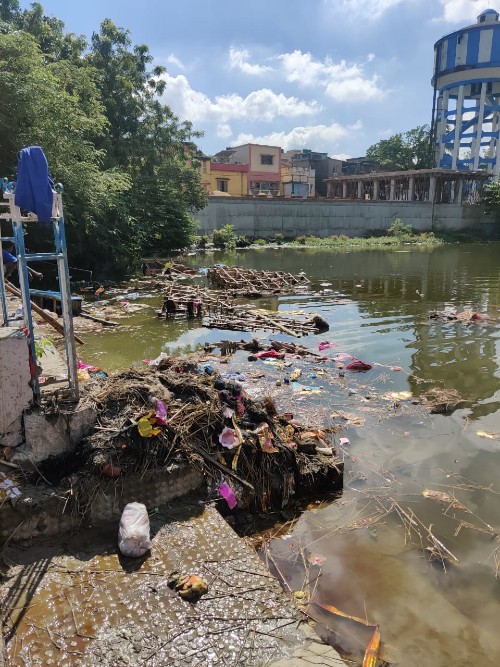
Although this is practised to some extent in West Bengal due to the presence of enforcement authorities on-site, widespread awareness regarding the consequences of idol immersion is needed along with more supervisory personnel to ensure that polluting elements are not used. Tightening of regulations can see better results too. If not from the public sector, human resources can be brought in from local, city-based NGOs as volunteers. This kind of monitoring is needed more urgently in cities like Mumbai, Pune and Nashik for Ganesh Chaturthi, and in several small towns of West Bengal.
The next thing to watch out for is the poisonous lead in the paints used that is irreversibly destroying marine and freshwater biodiversity. Organic, eco-friendly paints serve as alternatives to such paints. Lastly, the most feasible option is to carry out traditional immersions at home itself, with your family! Festivals become opportunities to be among our loved ones in joy and celebration, and many families choose to follow an eco-friendly way of immersing and then retrieving idols at home using a container. In some western countries like USA, idols are not allowed to be immersed in any water body. So, once an idol is purchased, it is used for the rituals and ceremonies every year, for as long as it lasts (at least 10-12 years).
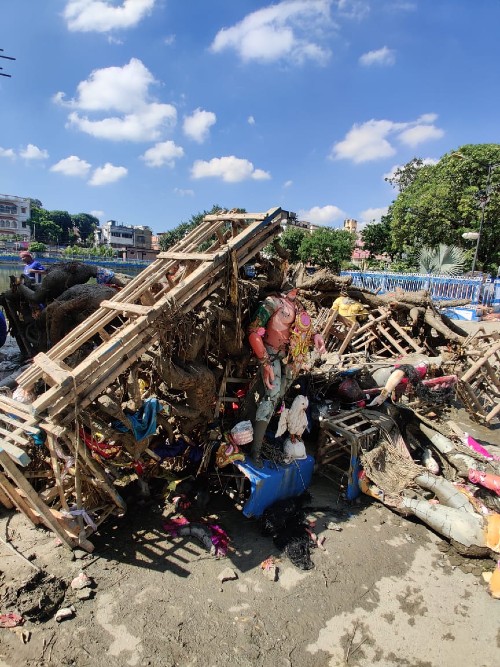
There is also an option of going for eco-friendly idols, and some devotees in Pune and Mumbai have taken this up. The biodegradable Ganesh idols are made of clay, papier-mâché and cow dung. While papier-mâché constitutes recyclable paper, clay and cow dung components are soluble when ‘immersed’ in a bucket of water. For clay idols, once it softens, the clay can be conserved to create the idol again next year! This becomes a crucial step towards recycling both the clay, as well as the water used in the process. With this, we can attain a sustainable and holistic celebration.
Water bodies are ultimately home to aquatic animals. Just like we don’t allow garbage to be dumped inside our homes, it is essential that the homes of these animals are guarded as well. Let us not forget that celebration is a part of every culture, but it should always be accompanied by care and responsibility towards nature.

